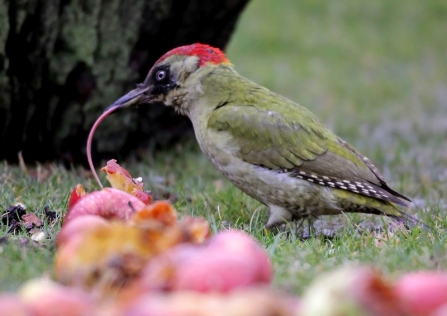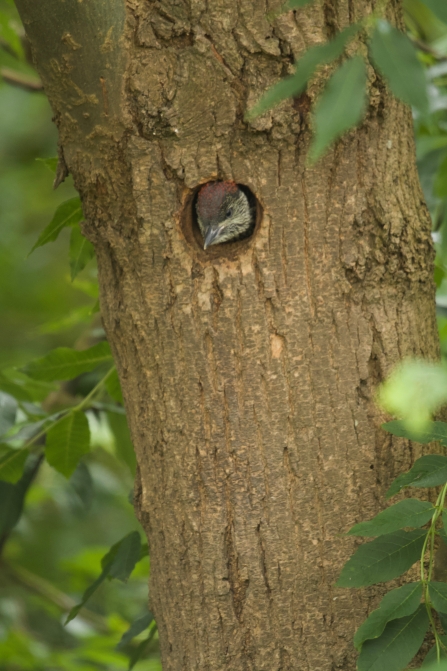Unlike other woodpecker species they rarely drum on trees, instead preferring to use loud vocalisations to attract mates and defend their territories; start listening out for their distinctive ‘yaffle’ calls you can hear at this time of the year. Inspired by their laughing call, an old country name for the Green Woodpecker is actually the ‘Yaffle’.
Feeding habits
Green Woodpeckers feed on the ground out in the open, favouring areas of unimproved grassland, sheep-grazed pasture, orchards and gardens, hopping around in search of their favourite food; ants. They are well camouflaged in the grass, only becoming noticeable when they call or fly away if you get too close. Out of the three woodpeckers found here in Essex, the Green Woodpecker is the most specialised when it comes to diet. They have specially adapted tongues which are coated in a sticky secretion produced by their salivary glands. They use this to extract ants and their larvae from the ground. Dissimilar to the other two woodpecker species, the Green Woodpecker is a rare bird feeder visitor, but you may see them in your garden feeding on ants or windfallen apples.



